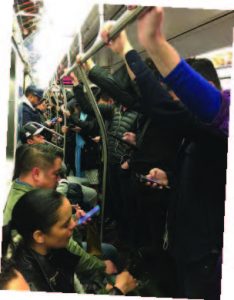The landscape of education in New Jersey is changing to keep pace with the future.
By Porter Van Dien
Too much? Too soon? A generation ago, many parents voiced concern over the introduction of science and engineering concepts to early education curricula. Now, a generation later, they practically demand it. The acronym that has burrowed its way into the vernacular is STEAM, which stands for Science, Technology, Engineering, Arts and Math. It’s not that there are schools out there not teaching these subjects; the STEAM concept refers to an interdisciplinary approach to their instruction.
If you are wondering what happened to STEM, that was STEAM before someone pointed out that folding in the arts might foster the kind of creativity that would make STEM kids more innovative and competitive. It’s kind of a left-brain, right-brain thing, which has generated a fair amount of debate. More on this later (see sidebar).
Wherever you stand on STEM vs. STEAM—as an educator, a parent or prospective employer—the goal is basically the same: The development of worker skills that better meet the demands of the 21st century. These skills go beyond a deeper knowledge of math and science. They include critical thinking, communication and problem-solving. All are essential to success, whether a job is science-related or not. From a top-down standpoint, the focus of STEAM education is to prepare young people to solve real-world problems and implement (or even create) new technologies.
The key part of that last sentence is real-world.
There is a growing acceptance of the fact that our children will be inheriting a planet that is suffering from overpopulation, dwindling resources, food stress, social inequality and poor environmental stewardship. Throw in climate change, if you like. You might quibble with one or two of those challenges (they are, arguably, somewhat endemic to humanity) but the fact is that the next couple of generations are going to face some really complex problems that, hopefully, our kids and grandkids will be able to understand and solve.
That begins with knowing how to ask the right questions, which is a big part of STEAM. One reason the A is in there is that the arts enhance a young person’s powers of observation and understanding of others; most problems are “people problems” on some level, after all. Whether you are just reading the room or attempting to absorb a new culture, you need to work your way through other humans to land at a quality solution. We all have had coworkers who lacked this ability—no matter how brilliant they were, their people skills usually undermined their brilliance. The S in STEAM is equally critical when it comes to formulating the right questions. a thinker who asks questions like a scientist will get to an answer that opens up a broad range of possible solutions. Throw in the T, E and M and that creative thinker will naturally employ what he or she has learned about technology, math and engineering to design, test and construct a great solution.

www.istockphoto.com
Regardless of what you feel qualifies as a STEM- or STEAM-related career, the number of jobs in this category here in the U.S. is likely to rise by 20% or more when the current crop of elementary-school kids hits age 30. That number translates to tens of millions of new, challenging jobs and is second only to healthcare-related careers (which are not entirely unrelated). In fact, relatively few jobs in the 2030s will be unrelated to STEAM. Already, more than half the jobs occupied by “graduates” of STEAM programs are different than the ones they had originally envisioned. Indeed, not everyone can be a software developer, nor should they be. But a working knowledge of coding and web design can take young workers places they never thought of going. Someone who thinks like a scientist or engineer may find fulfillment in a job outside of science or engineering. In other words, STEAM is a mindset—or, if you prefer, a skillset—that encompasses the broadest possible range of job opportunities, as well as entrepreneurship and a spirit of enterprise.

www.istockphoto.com
So where are we in New Jersey on STEM and STEAM? The New Jersey Education Association is behind these programs. All students benefit from them, it states, because they teach independent innovation and allow students to explore greater depth of all of the subjects by utilizing the skills learned. The NJEA has a Technology Committee, which studies the impact of technology on educational programs and reviews technology curricula proposals and initiatives for appropriateness. The committee also makes recommendations for funding related to equipment, personnel, programs and training. Its overarching goal is to ensure that every student in the state achieves a degree of technological literacy.

www.istockphoto.com
The NJEA promotes a number of apps that support a STEAM approach to instruction, including Screencastify and Build with Chrome—both generated by Google—and EDPuzzle, which enables teachers to create lessons by importing videos from anywhere on the Internet and then inserting their own voices to ask students questions SketchUp helps students engage in 3D modeling for building projects, while Scratch functions as a coding tutorial that also encourages students to think creatively and work collaboratively. As for the addition of the arts to make STEM into STEAM, the NJEA created a Soaring with STEAM program, which emphasizes hands-on, cross-curricular learning that is focused on strengthening subjects in high demand for future careers.
Niche.com, a web site that issues report cards on U.S. schools, recently ranked New Jersey’s top STEM schools. No fewer than 66 received an A+, with the top-ranked school High Tech High in Lincroft. The #7 ranked school is the Union County Magnet High School in Scotch Plains, which Niche.com also ranked the #3 public high school in the state.
Each school, of course, coordinates its STEM/STEAM program differently. The idea, however, is the same—to harness the strengths of the faculty and encourage students to develop critical thinking across the various disciplines. At the early grade-school level, it mostly involves building projects, some of which can be surprisingly complex. Ask a first- or second-grade teacher and they will tell you that their kids are up to whatever the challenge is. Research strongly suggests that kids this age will put a surprising amount of time, effort and thought into projects if they believe it will make them smarter. This is confirmed by children in lower school classrooms through the state on a daily basis.
A STEAM education program can start as soon as children enter a school. That’s the case at The Academy of Our Lady of Peace in New Providence, a PreK through 8 school where each year’s curriculum builds on the ones before it. Jaclyn Church, who teaches middle schoolers at The Academy, appreciates this philosophy, which relies on communication between the teachers.
“We discuss topics and how they can be brought into other subjects,” she explains. “When I have the 7th grade create a zoo to apply different information, the technology teacher has them create websites for their zoo. As I was teaching the 6th grade about space, the language arts teacher read a book on the subject matter and we both worked with the students when they created a space suit as a culmination of both subjects. With communication, a little planning and some flexibility, cross-curricular education can happen pretty easily and can greatly enrich the students’ education.”
“Having started this process at three years old,” Church adds, “we ensure our students are ready to grow these skills. They receive a solid foundation that allows them to succeed in high school and beyond.”
In terms of STEM/STEAM proficiency in high school, the rubber has already met the road by the time students enter 6th, 7th and 8th grades. A study done by Microsoft among college students in STEM-related majors revealed that 4 in 5 had been engaged in STEAM or STEAM programs by the time they reached high school.
One of the goals of STEAM programs is to attract more young women into careers in the tech and science sectors by engaging them early. The earlier the better, in fact. Michael Bernard, Ph.D. chairs the Science Department at Benedictine Academy, an all-girls high school in Elizabeth. He estimates that only around 10 to 15 percent of incoming freshmen are inclined toward the sciences, adding that they tend to stand out from the outset. Dr. Bernard works closely with the art teacher to create cross-curricular interest in anatomy.
“It is incredibly helpful for art students to understand and be familiar with anatomy and musculature to accurately depict subjects in their art pieces,” he says. “Anatomy is open to juniors so that a suitable portfolio might be created in time for college application. Additionally, each quarter of the year requires Biology and Anatomy students to produce a poster project outlining a science problem that needs solving. Two-thirds of the grade for these projects is based on artistry and creativity.”
One of the results of this fusion is that Benedictine is adding a class in Comparative Anatomy, which was initiated by a committee of students that petitioned the principal for more advanced classwork in Anatomy and Physiology. Any teacher will tell you that type of request is one of the big payoffs for an educator. The best, though, is when a science course changes a student’s trajectory.

www.istockphoto.com
“What happened this past year is why I, as a teacher, truly love my job,” explains Dr. Bernard. “One student in Biology was not faring very well—passing, but not by much. Then we started the unit on Genetics and everything changed. For this young lady, homework was a breeze, class participation skyrocketed, and grades went from last place to first. She made a connection with the material, and that made all the difference. Now she wants to be a genetic counselor. Who knew?” Jaclyn Church also has had students explore the medical field because they enjoyed learning about the body systems at The Academy of Our Lady of Peace.
“I also have several who have gone into engineering programs because they liked designing, creating, and working to solve problems, as the students do in our Science and STEM fair.”
Although the goals of STEM/STEAM programs are similar, they are anything but cookie-cutter. How they are designed and what they are called can vary greatly from school to school, both public and private. At Gill St. Bernard’s School in Gladstone, STEAM morphs into STREAMS from grades 4 through 6: sustainability, technology, research, engineering, agriculture, math, and service. “It extends traditional coursework in science with fieldwork that utilizes the natural resources of our campus, explains Irene Mortensen, Director of Studies. “The STREAMS curriculum is ideal for students in this age group, as it encourages them to apply science and engineering skills, as well as classroom learning, in a hands-on, dynamic outdoor environment. The program is designed to foster problem-solving and design thinking. As students move through the program, they apply the field scientist skills and integral research skills practiced in previous years of STREAMS, to complete more comprehensive, interdisciplinary capstone projects.”
Gill St. Bernard’s takes children from pre-k through high school graduation, enabling the faculty to build 14 years worth of science, math and technology skills in the students, immersing them in experiential, in-depth projects that incorporate STEM components, critical and design thinking, along with research. Experiences and coursework vary for students, adds Mortensen, which allows for a personalized profile to take shape for each student.
“Collaboration among teachers is key,” she says, echoing what educators from both private and public schools across the state maintain is the crucial building block to vibrant STEM/STEAM curricula.
Many schools in New Jersey, in an effort to supercharge curricula, have reached out to other schools for ideas on how to beef up their STEM/STEAM offerings. For the most part, schools are willing to compare notes and share ideas, even with “competitors,” notes Jayne Geiger, longtime Head of School at Far Hills Country Day and now at the Rumson Country Day School. She assembled a group of teachers, board trustees and administrators (herself included) to visit other schools in New Jersey with progressive STEM/STEAM programs.
“What we found was that the ‘materials’ for a STEM program at RCDS were actually right in line with these other schools—in some cases a bit ahead—and had been for some time,” she says. “The components of a great STEM/STEAM program already existed in ‘pockets’ that just needed to talk to one another a bit more to become fully integrated. We didn’t have a label for what we were doing. Now we do—and teachers are excited to make these cross-curricular connections”
RCDS had already constructed a state-of-the-art building on campus in 2010 to house science classrooms and labs, along with a fine arts studio, a new library and collaborative meeting spaces. In other words, the physical space already existed. More New Jersey schools have followed suit. Just last year, the Morristown–Beard School cut the ribbon on a 25,000 sq. ft. Math and Science Building, featuring interconnected, interdisciplinary teaching spaces.
“Being physically closer promotes discussion among the teachers and generates meaningful opportunities for students to engage in interdisciplinary risk-taking in a cutting-edge facility,” explains Headmaster Peter J. Caldwell.
The building, he adds, also has its own art gallery. And soon MBS will open a Center for Innovation & Design, where students can collaborate and engage with one another and with faculty to incubate and develop new ideas and products. Students will analyze challenges, deconstruct them, think creatively, tinker, forward new and unconventional ideas, and vet them with their peers.
“If we can do this well, our students’ experience in the Center for Innovation & Design will be organic and will be relevant to the world in which they live and work,” says Darren Burns, head of Morristown–Beard’s Upper School. “I envision their projects as being a way to set themselves apart and get a jump on life beyond MBS.”
Not every school can afford a STEAM building, of course. But one of the consequences (or upsides, if you will) of the increasing focus on these curricula is a new approach to classroom design. Schools dipping into their renovation budgets are now exploring how to create spaces that will encourage students to think and investigate, as well as work in teams. Obviously, certain subjects have specific requirements in terms of layout and equipment. There is a big difference between the must-haves in a chemistry classroom and a robotics lab. In general though, a STEAM-friendly classroom should be flexible and adaptable, where kids can work and plan in close quarters but also be loud and exuberant. In many cases, schools are exploring the three-room concept: a traditional lab space, a traditional classroom and a spacious commons area. These rooms are typically easily accessible to one another, and also offer access to the outdoors (which may come with potential security concerns).
That being said, no matter how cool it is to see a kid’s new tech-friendly classroom, not every parent is all-in with the commitment to a STEM education. There are some children who demonstrate, early on, interests and talents far afield from science, technology, engineering and math. So what if your young one falls into this category? Should he or she still be pushed through these curricula?
The benefits of this type of learning will absolutely pay dividends down the road, says Stephen DeAngelis of Enterra Solutions, a company specializing in innovative applications of artificial intelligence.
“Educating students in STEM subjects, if taught correctly, prepares students for life, regardless of the profession they choose to follow,” he told educators recently at the University of San Diego. “Those subjects teach students how to think critically and how to solve problems—skills that can be used throughout life to help them get through tough times and take advantage of opportunities whenever they appear.”

www.istockphoto.com
Is the A in STEAM really necessary?
A comfort level with technology is certainly an asset for someone who pursues a career in the arts. But is an artistic mind an asset to someone whose future lies in science and technology? Engineers who “wing it” are generally not considered to be assets, but creative thinkers are.
However, a creative mind can’t really be created through STEAM or any other process. You either have it, or you don’t—and if you do, it will find a way to come through. For this reason, there are arts-oriented people who actually oppose the addition of the A in STEAM. They believe that force-feeding an artistic child science, math and engineering may blunt his or her creativity.
Proponents of “the A” point out that, in the broadest terms, the arts develop parts of the brain and personality that give workers an edge in planning and innovation, design and ergonomics, and the ability to engage and communicate with co-workers. The best engineers, they point out, are inherently creative. So why not foster quality from the start?
 PUTTING THE ‘S’ IN STEAM
PUTTING THE ‘S’ IN STEAM
In most educational settings, the S in STEAM/STEM— Science—takes something of a lead role in the implementation of cross-curricular programs. And for good reason: Science is as much a process of thinking as it is a subject. “It’s something that you can incorporate into a lot of different classes,” says Yveslaine Gadzi, who teaches science at the Chatham Day School. For instance, Chatham 6th graders made their own biodome last year, while the 8th graders created a forensic science project with its own crime scene. These involved myriad aspects of technology, math, design, and writing.
“We ensure that all of our students know how to incorporate different problem-solving skills into their work and think progressively,” she explains. “The departments work well together to make sure that kids are taking a ‘STEM approach’ into their classes. They are very well prepared for high school when they leave here.”
Gadzi has taught internationally and in New Jersey public high schools. Over the last decade she confirms that schools have continued to sharpen their focus on STEM/STEAM programs—“that’s true for both public and private…across the board.










 Poets have been writing odes to mothers for a thousand years. Baby books have been offering advice to moms for a century. Alas, no words convey the true essence of motherhood quite like the intimate moments captured through the lens of celebrated lifestyle photographer Sue Barr. Her work offers an honest and engaging window into what it looks like to be a modern New Jersey mom.
Poets have been writing odes to mothers for a thousand years. Baby books have been offering advice to moms for a century. Alas, no words convey the true essence of motherhood quite like the intimate moments captured through the lens of celebrated lifestyle photographer Sue Barr. Her work offers an honest and engaging window into what it looks like to be a modern New Jersey mom.




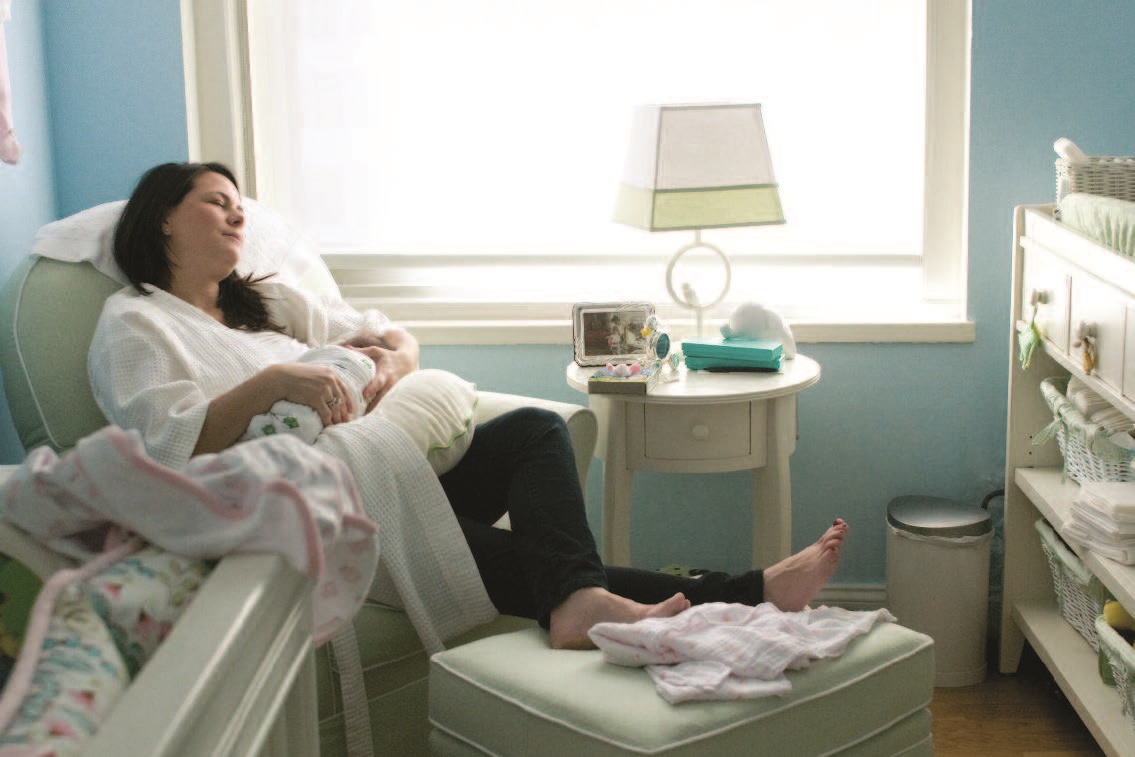




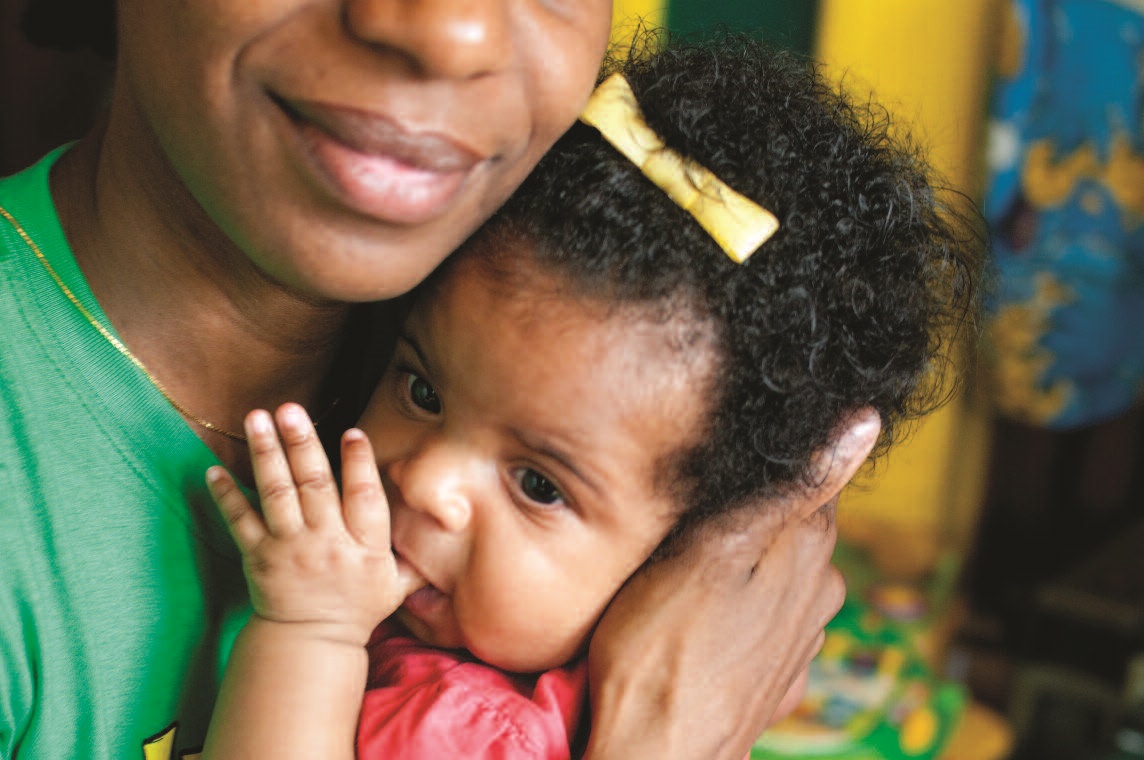





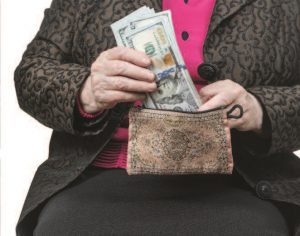


 Paragon Tap & Table • Beef Ramen
Paragon Tap & Table • Beef Ramen Arirang Hibachi Steakhouse • Wasabi Crusted Filet Mignon
Arirang Hibachi Steakhouse • Wasabi Crusted Filet Mignon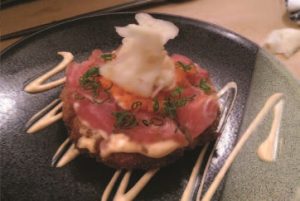 Daimatsu • Sushi Pizza
Daimatsu • Sushi Pizza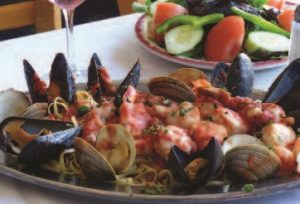 The Barge • Cioppino
The Barge • Cioppino Luciano’s Ristorante & Lounge • Pan Seared Scallops
Luciano’s Ristorante & Lounge • Pan Seared Scallops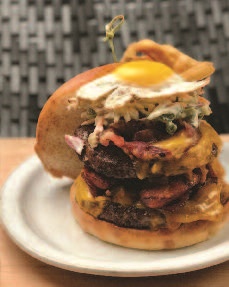 Morris Tap & Grill • The Monster Burger
Morris Tap & Grill • The Monster Burger Garden Grille • Roasted Garlic & Herb Rubbed Grilled Sirloin
Garden Grille • Roasted Garlic & Herb Rubbed Grilled Sirloin LongHorn Steakhouse • Outlaw Ribeye
LongHorn Steakhouse • Outlaw Ribeye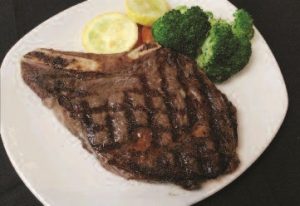 Outback Steakhouse • Bone-In Natural Cut Ribeye
Outback Steakhouse • Bone-In Natural Cut Ribeye Arirang Hibachi Steakhouse • Volcano Roll
Arirang Hibachi Steakhouse • Volcano Roll Ursino Steakhouse & Tavern • House Carved 16oz New York Strip Steak
Ursino Steakhouse & Tavern • House Carved 16oz New York Strip Steak Vine Ripe Markets • Filet Crostini with Horseradish Cream Sauce
Vine Ripe Markets • Filet Crostini with Horseradish Cream Sauce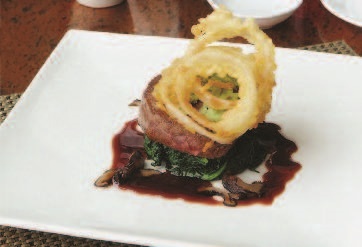








 Making my way from a coffee shop to the Ho Chi Minh Mausoleum is as jarring as it gets for an American war veteran. Not too far away is a monument to John McCain’s seizure at Truch Bac Lake (left), commemorating where he parachuted after being shot down in 1967. Equally disconcerting was passing through the doors of Hoa Lo Prison (aka the Hanoi Hilton), where captured soldiers and airmen were subjected to deprivation and torture. American POWs had more prescient gallows humor than they knew. The twenty-five-story Hanoi Towers overshadows the infamous prison these days. The day I visited Hanoi’s university, the Temple of Literature, built in 1076, I watched proud parents taking pictures of recent grads with their diplomas. They were happy to pose with me, too.
Making my way from a coffee shop to the Ho Chi Minh Mausoleum is as jarring as it gets for an American war veteran. Not too far away is a monument to John McCain’s seizure at Truch Bac Lake (left), commemorating where he parachuted after being shot down in 1967. Equally disconcerting was passing through the doors of Hoa Lo Prison (aka the Hanoi Hilton), where captured soldiers and airmen were subjected to deprivation and torture. American POWs had more prescient gallows humor than they knew. The twenty-five-story Hanoi Towers overshadows the infamous prison these days. The day I visited Hanoi’s university, the Temple of Literature, built in 1076, I watched proud parents taking pictures of recent grads with their diplomas. They were happy to pose with me, too. Hanoi was only one stop on my three-week odyssey. In South Vietnam, my friends and I idled a few days in the seaside resort of Vung Tau, called Cap Saint-Jacques by the French. Gorgeous mountain lookouts and theme parks feature huge statues: the Buddha atop one and Jesus another. Our B&B was opposite a wonderful seafood restaurant, where we dined among what looked like members of Vietnamese high society celebrating Christmas. In Ho Chi Minh City (formerly Saigon), Christmas carols blasted day and night from commercial malls and government offices everywhere in the Communist metropolis. Gift-wrapped packages were stacked in store windows, hotel clerks wore red Santa Claus hats, and Christmas trees were decorated with bright lights and outsized ornaments. The incongruity of it all suggested we may have lost the military conflict, but we won the cultural war. The Vietnamese may have to decide one day if that’s a good thing
Hanoi was only one stop on my three-week odyssey. In South Vietnam, my friends and I idled a few days in the seaside resort of Vung Tau, called Cap Saint-Jacques by the French. Gorgeous mountain lookouts and theme parks feature huge statues: the Buddha atop one and Jesus another. Our B&B was opposite a wonderful seafood restaurant, where we dined among what looked like members of Vietnamese high society celebrating Christmas. In Ho Chi Minh City (formerly Saigon), Christmas carols blasted day and night from commercial malls and government offices everywhere in the Communist metropolis. Gift-wrapped packages were stacked in store windows, hotel clerks wore red Santa Claus hats, and Christmas trees were decorated with bright lights and outsized ornaments. The incongruity of it all suggested we may have lost the military conflict, but we won the cultural war. The Vietnamese may have to decide one day if that’s a good thing In 1969, as a young Army lieutenant, I flew along the Cambodian border in a Birddog observation plane, spending my days looking for North Vietnamese troops. The bomb-cratered landscape I surveilled resembled the moon Neil Armstrong stepped onto that same year. Occasionally, what sounded like the intermittent buzzing of mosquitos around our plane drew my attention to muzzle flashes from shooters a thousand feet below. As quickly as they appeared, they skedaddled into their hidey-holes on the side of the border we weren’t supposed to cross. Being a target of small arms fire will instantly snap you out of revaries contemplating the natural scenic beauty of Vietnam. And out of the remorse for what a large country can do to destroy a small one.
In 1969, as a young Army lieutenant, I flew along the Cambodian border in a Birddog observation plane, spending my days looking for North Vietnamese troops. The bomb-cratered landscape I surveilled resembled the moon Neil Armstrong stepped onto that same year. Occasionally, what sounded like the intermittent buzzing of mosquitos around our plane drew my attention to muzzle flashes from shooters a thousand feet below. As quickly as they appeared, they skedaddled into their hidey-holes on the side of the border we weren’t supposed to cross. Being a target of small arms fire will instantly snap you out of revaries contemplating the natural scenic beauty of Vietnam. And out of the remorse for what a large country can do to destroy a small one.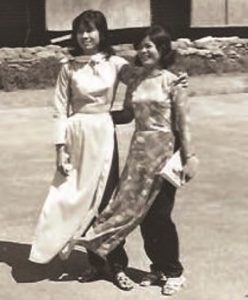 Nga motioned for me to sit. She kept leaving the small kitchen area to compose herself and catch her breath. She said something about me being like a detective to find her, still in shock until she finally settled beside me. I’d brought along some old pictures. Our great friend Hung, her best friend Lan (above left), and my fellow lieutenants: Fly, Sam, and Jim. We lingered over the images of parties at her house. Ba Muoi Ba beer bottles littered tables filled with spring rolls, pho, and other delicacies—my first introductions to what is now world-famous cuisine. What news of Lan? I was distressed to learn she was “sick now,” living with her family just a few houses down the street. Of course, I wanted to visit her.
Nga motioned for me to sit. She kept leaving the small kitchen area to compose herself and catch her breath. She said something about me being like a detective to find her, still in shock until she finally settled beside me. I’d brought along some old pictures. Our great friend Hung, her best friend Lan (above left), and my fellow lieutenants: Fly, Sam, and Jim. We lingered over the images of parties at her house. Ba Muoi Ba beer bottles littered tables filled with spring rolls, pho, and other delicacies—my first introductions to what is now world-famous cuisine. What news of Lan? I was distressed to learn she was “sick now,” living with her family just a few houses down the street. Of course, I wanted to visit her.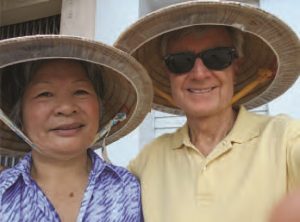 Nga and I held time at bay for several hours, though not quite turning back the clock. Familiarity returned; romance less so. I realize now that a lonely soldier confused warm companionship and a dollop of guilt with true love. I won’t diminish what Nga and I had during the war. Had I brought her home to America, there’s an even chance we might have grown to love each other enough for a marriage to prosper and thrive. And just as likely she might have become homesick and discontented with a fast-paced and rapidly changing society so different from her traditional life in Vietnam. The exigencies of fate won’t allow a resolve to these hypotheticals.
Nga and I held time at bay for several hours, though not quite turning back the clock. Familiarity returned; romance less so. I realize now that a lonely soldier confused warm companionship and a dollop of guilt with true love. I won’t diminish what Nga and I had during the war. Had I brought her home to America, there’s an even chance we might have grown to love each other enough for a marriage to prosper and thrive. And just as likely she might have become homesick and discontented with a fast-paced and rapidly changing society so different from her traditional life in Vietnam. The exigencies of fate won’t allow a resolve to these hypotheticals.




 You set the payment schedule. Make it crystal clear that there will be “benchmarks” throughout the job where you’ll be writing out checks, agree on what those are, and then say something like, “We’ll get along great until you start asking us for money on things you haven’t completed.” If you feel you need to explain further, just say, “Sorry, but you are paying for the sins of the last guy who worked here. I hope you understand.” Believe me, the contractor will understand. On a six-figure job, there should actually be some kind of language in the contract stating that a portion of advance money will be placed in escrow.
You set the payment schedule. Make it crystal clear that there will be “benchmarks” throughout the job where you’ll be writing out checks, agree on what those are, and then say something like, “We’ll get along great until you start asking us for money on things you haven’t completed.” If you feel you need to explain further, just say, “Sorry, but you are paying for the sins of the last guy who worked here. I hope you understand.” Believe me, the contractor will understand. On a six-figure job, there should actually be some kind of language in the contract stating that a portion of advance money will be placed in escrow.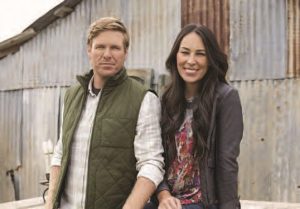

 What is it about tears that make them such fertile territory for songwriters? Think, for instance, about how many times you’ve heard the words Don’t Cry as song lyrics: The Four Seasons (“Big Girls Don’t Cry”), Melissa Manchester (“Don’t Cry Out Loud”), Guns n Roses (“Don’t Cry”) and of course the signature song from Evita (“Don’t Cry for Me, Argentina”). The irony is that the inability to produce healthy tears can be a sign of a serious medical situation. Indeed, keratoconjunctivitis sicca—better known as Dry Eye Syndrome—affects millions of people each year. Based on data derived from the 2013 National Health & Wellness Survey, the percentage of Americans with dry eye could be as high as 6.8 percent—and the number of cases promises to increase steadily in the near future.
What is it about tears that make them such fertile territory for songwriters? Think, for instance, about how many times you’ve heard the words Don’t Cry as song lyrics: The Four Seasons (“Big Girls Don’t Cry”), Melissa Manchester (“Don’t Cry Out Loud”), Guns n Roses (“Don’t Cry”) and of course the signature song from Evita (“Don’t Cry for Me, Argentina”). The irony is that the inability to produce healthy tears can be a sign of a serious medical situation. Indeed, keratoconjunctivitis sicca—better known as Dry Eye Syndrome—affects millions of people each year. Based on data derived from the 2013 National Health & Wellness Survey, the percentage of Americans with dry eye could be as high as 6.8 percent—and the number of cases promises to increase steadily in the near future. What’s the secret to good eye health? Dr. Confino recommends balancing good nutrition with getting enough rest and also treating the eye as if it were a muscle—“that is, exercising it and caring for it with the same respect as any large muscle in the body.”
What’s the secret to good eye health? Dr. Confino recommends balancing good nutrition with getting enough rest and also treating the eye as if it were a muscle—“that is, exercising it and caring for it with the same respect as any large muscle in the body.” 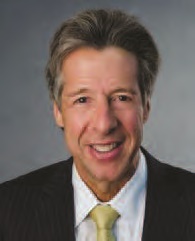 Joel Confino’s specialty is cataract surgery. He is a graduate of the Albert Einstein College of Medicine and completed his Ophthalmology residency at Mount Sinai School of Medicine.
Joel Confino’s specialty is cataract surgery. He is a graduate of the Albert Einstein College of Medicine and completed his Ophthalmology residency at Mount Sinai School of Medicine.  Erica O’Lenick is a graduate of the Pennsylvania College of Optometry. She has experience in pediatric, binocular vision care, ocular disease, and anterior segment care.
Erica O’Lenick is a graduate of the Pennsylvania College of Optometry. She has experience in pediatric, binocular vision care, ocular disease, and anterior segment care.
 According to the American Sleep Association (ASA), nearly one in 10 adults in this country suffers from sleep apnea. Around half have a snoring problem. Two in five adults fall asleep during the day when they should be awake, with an alarmingly high 5% reporting that they do so while driving at least once a month. The ASA also attributes between 3% and 5% of obesity to sleep deprivation. Not surprisingly, insomnia tops the chart of sleep issues.
According to the American Sleep Association (ASA), nearly one in 10 adults in this country suffers from sleep apnea. Around half have a snoring problem. Two in five adults fall asleep during the day when they should be awake, with an alarmingly high 5% reporting that they do so while driving at least once a month. The ASA also attributes between 3% and 5% of obesity to sleep deprivation. Not surprisingly, insomnia tops the chart of sleep issues. The Sleep Disorders Center is equipped with all state-of-the-art diagnostic equipment to monitor heart, breathing and muscle activity, as well as specialized equipment such as the BiPAP machine, a non-invasive form of therapy for patients suffering from sleep apnea. Videos are an important tool in sleep analysis and are regularly reviewed with patients to help them understand the source of their sleeplessness.
The Sleep Disorders Center is equipped with all state-of-the-art diagnostic equipment to monitor heart, breathing and muscle activity, as well as specialized equipment such as the BiPAP machine, a non-invasive form of therapy for patients suffering from sleep apnea. Videos are an important tool in sleep analysis and are regularly reviewed with patients to help them understand the source of their sleeplessness.






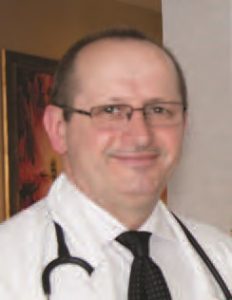 Dr. Pidkaminetskiy is especially impressed with the community-oriented approach of the practice, as well as the convenience of close contact with his colleagues to expedite immediate consultations and sharing of vital patient information. Patients similarly appreciate the wide range of medical services and treatments provided by Trinitas and the ease with which care can be both delivered and accessed at the various practice offices.
Dr. Pidkaminetskiy is especially impressed with the community-oriented approach of the practice, as well as the convenience of close contact with his colleagues to expedite immediate consultations and sharing of vital patient information. Patients similarly appreciate the wide range of medical services and treatments provided by Trinitas and the ease with which care can be both delivered and accessed at the various practice offices. Jazmyn Thomas (pictured right), a current patient of the Medical Group, appreciated Dr. Baerga’s kindness before, during, and after having minor surgery. “He was very supportive,” said the Elizabeth resident. “I called him with questions every day, sometimes more than once, and he never made me feel like I was a bother. Even when he wasn’t in the office, he managed to get back to me right away. He made me feel a lot better about everything, especially because I had never had surgery before.”
Jazmyn Thomas (pictured right), a current patient of the Medical Group, appreciated Dr. Baerga’s kindness before, during, and after having minor surgery. “He was very supportive,” said the Elizabeth resident. “I called him with questions every day, sometimes more than once, and he never made me feel like I was a bother. Even when he wasn’t in the office, he managed to get back to me right away. He made me feel a lot better about everything, especially because I had never had surgery before.”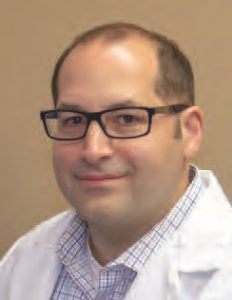
 The Trinitas Medical Group offers a large and growing staff of
The Trinitas Medical Group offers a large and growing staff of 
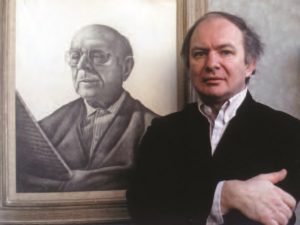


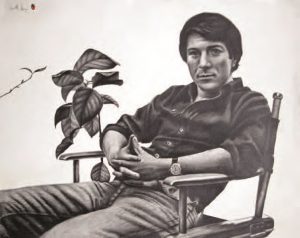


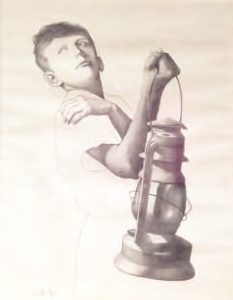

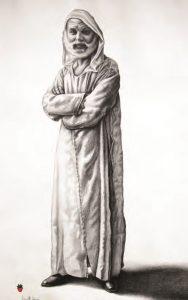





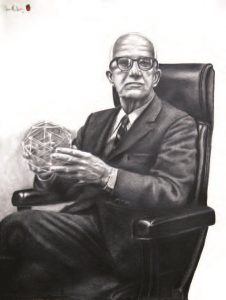
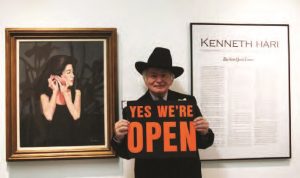
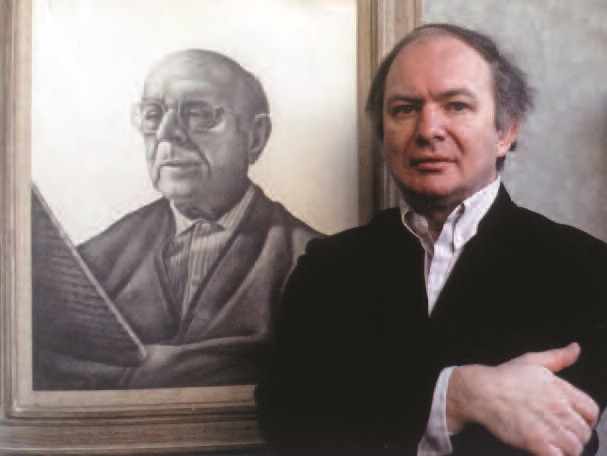
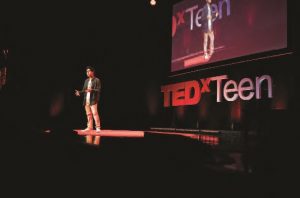








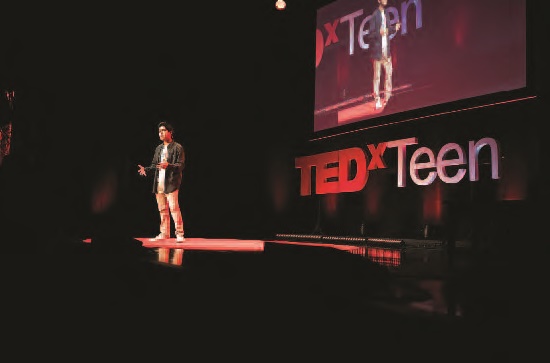



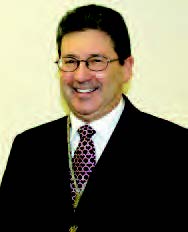 Adam Rowen, MD
Adam Rowen, MD
 Paragon Tap & Table • Beef Ramen
Paragon Tap & Table • Beef Ramen Arirang Hibachi Steakhouse • Wasabi Crusted Filet Mignon
Arirang Hibachi Steakhouse • Wasabi Crusted Filet Mignon Daimatsu • Sushi Pizza
Daimatsu • Sushi Pizza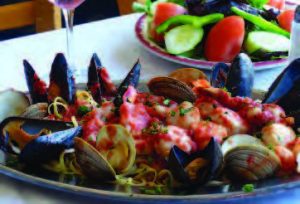 The Barge • Cioppino
The Barge • Cioppino Luciano’s Ristorante & Lounge • Warm Goat Cheese Salad
Luciano’s Ristorante & Lounge • Warm Goat Cheese Salad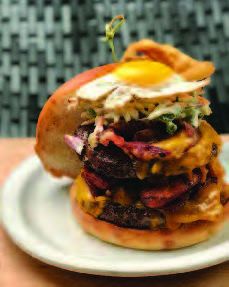 Morris Tap & Grill • The Monster Burger
Morris Tap & Grill • The Monster Burger Garden Grille • Grilled Chicken Paillard
Garden Grille • Grilled Chicken Paillard LongHorn Steakhouse • Outlaw Ribeye
LongHorn Steakhouse • Outlaw Ribeye Outback Steakhouse • Bone-In Natural Cut Ribeye
Outback Steakhouse • Bone-In Natural Cut Ribeye Arirang Hibachi Steakhouse • Volcano Roll
Arirang Hibachi Steakhouse • Volcano Roll Ursino Steakhouse & Tavern • House Carved 16oz New York Strip Steak
Ursino Steakhouse & Tavern • House Carved 16oz New York Strip Steak
 One of the more interesting developments in the science of cement is the elusive goal of creating a fracture-proof product. At some point, the weight a cement structure is asked to bear just overwhelms it and it begins to crack. (FYI, every building material has its “breaking point,” including steel). The primary challenge for ensuring fracture resistance is the structure of cement, in which everything in the mix sticks to everything else. That sounds good, but a structural engineer will tell you it’s not. It’s disorganized.
One of the more interesting developments in the science of cement is the elusive goal of creating a fracture-proof product. At some point, the weight a cement structure is asked to bear just overwhelms it and it begins to crack. (FYI, every building material has its “breaking point,” including steel). The primary challenge for ensuring fracture resistance is the structure of cement, in which everything in the mix sticks to everything else. That sounds good, but a structural engineer will tell you it’s not. It’s disorganized. Last December, a team of German biomimeticists announced in Science Advances that they had found a way to reorganize the structure of cement to create fracture resistance at the “nano” level. Biomimetics is a branch of science that is unfamiliar to most of us; it
Last December, a team of German biomimeticists announced in Science Advances that they had found a way to reorganize the structure of cement to create fracture resistance at the “nano” level. Biomimetics is a branch of science that is unfamiliar to most of us; it  But wait. If you’re calling your contractor right now, put down the phone. Aerogel is hideously expensive in homebuilding quantities and won’t be available in insulating bricks for several more years. However, as with all good science, there are already folks working to up production, increase the economy of scale, and bring this product to market as rapidly as possible.
But wait. If you’re calling your contractor right now, put down the phone. Aerogel is hideously expensive in homebuilding quantities and won’t be available in insulating bricks for several more years. However, as with all good science, there are already folks working to up production, increase the economy of scale, and bring this product to market as rapidly as possible. What else is on the homebuilding horizon? Hold on to your hat. We’ve been following the progress of 3D printing in this magazine for many years, though primarily for its applications in the medical and lifestyle areas. Enter the wiz kids at MIT. In 2017, they announced that they were developing a system that would enable builders to 3D print the fundamental structure of an entire house faster and cheaper than traditional construction materials.
What else is on the homebuilding horizon? Hold on to your hat. We’ve been following the progress of 3D printing in this magazine for many years, though primarily for its applications in the medical and lifestyle areas. Enter the wiz kids at MIT. In 2017, they announced that they were developing a system that would enable builders to 3D print the fundamental structure of an entire house faster and cheaper than traditional construction materials. Unconstrained by the rules of engineering that currently restrict how homes are constructed using standard methods and materials, a 3D printed home could open the door to entirely new kinds of living spaces. And these homes would go up fast. Indeed, a prototype of the system completed a 12-foot domed structure with a 50- foot diameter in just over 12 hours. It was made of foam-insulated concrete and conformed to all of the local building codes. The printer’s prototype, mounted on a tracked vehicle, employed a precision-motion industrial robotic arm, which controlled a construction nozzle (similar to the ones that spray insulation). Unlike traditional 3D printers, where the nozzle is locked into a set structure, the MIT printer was unencumbered and could print anything, anywhere.
Unconstrained by the rules of engineering that currently restrict how homes are constructed using standard methods and materials, a 3D printed home could open the door to entirely new kinds of living spaces. And these homes would go up fast. Indeed, a prototype of the system completed a 12-foot domed structure with a 50- foot diameter in just over 12 hours. It was made of foam-insulated concrete and conformed to all of the local building codes. The printer’s prototype, mounted on a tracked vehicle, employed a precision-motion industrial robotic arm, which controlled a construction nozzle (similar to the ones that spray insulation). Unlike traditional 3D printers, where the nozzle is locked into a set structure, the MIT printer was unencumbered and could print anything, anywhere. That means a home could be constructed to address its specific environment. For instance, walls could have varying degrees of insulation or thickness based on which direction (e.g. north or south) they faced, or be tapered or curved to perform in windy environments. Wiring and plumbing could be pre-inserted into the forms the printer creates. Complex shapes and overhangs that would simply be too costly or too difficult to create with traditional building methods, could be produced from various materials with the push of a button. In a paper published in Science Robotics, the researchers pointed out that the construction industry hasn’t changed in hundreds of years: “Buildings are rectilinear, mostly built from single materials, put together with saws and nails.” Obviously, the scientific community is aiming to change this narrative.
That means a home could be constructed to address its specific environment. For instance, walls could have varying degrees of insulation or thickness based on which direction (e.g. north or south) they faced, or be tapered or curved to perform in windy environments. Wiring and plumbing could be pre-inserted into the forms the printer creates. Complex shapes and overhangs that would simply be too costly or too difficult to create with traditional building methods, could be produced from various materials with the push of a button. In a paper published in Science Robotics, the researchers pointed out that the construction industry hasn’t changed in hundreds of years: “Buildings are rectilinear, mostly built from single materials, put together with saws and nails.” Obviously, the scientific community is aiming to change this narrative. Bluetooth Padlock
Bluetooth Padlock

 SKINS GAME
SKINS GAME FORE THOUGHT
FORE THOUGHT
 SWEET SCIENCE
SWEET SCIENCE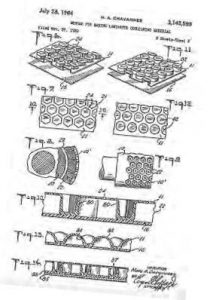 POP CULTURE
POP CULTURE BARRIER BREAKER
BARRIER BREAKER

 Forrester can do stately and elegant, too. Veal loin, thickly sliced, roasted till rosy and stacked on a potage of corn flecked with kernels, is given a couple scoops of aged gorgonzola, whose sharpness bites into tender, dense meat and tames the sweet corn. It’s a genius combination, these three elements I can’t remember ever eating together. By the time I’m onto the olive oil semifreddo with its plush peanut zabaglione and clever pretzel crumble, I also can’t remember feeling slighted that it took me till age 64 to have veal and corn and gorgonzola as an ensemble.
Forrester can do stately and elegant, too. Veal loin, thickly sliced, roasted till rosy and stacked on a potage of corn flecked with kernels, is given a couple scoops of aged gorgonzola, whose sharpness bites into tender, dense meat and tames the sweet corn. It’s a genius combination, these three elements I can’t remember ever eating together. By the time I’m onto the olive oil semifreddo with its plush peanut zabaglione and clever pretzel crumble, I also can’t remember feeling slighted that it took me till age 64 to have veal and corn and gorgonzola as an ensemble. All that, the duck-and-eggplant, beans-and-lamb, pasta- and-pork, veal-and-corn, and semifreddo-zabaglione, is one of Randy Forrester’s new tasting menus; it’s the “Dalla Terre,” the meat menu. There’s also a “Dal Mare,” a seafood-focused menu. You need to do both.
All that, the duck-and-eggplant, beans-and-lamb, pasta- and-pork, veal-and-corn, and semifreddo-zabaglione, is one of Randy Forrester’s new tasting menus; it’s the “Dalla Terre,” the meat menu. There’s also a “Dal Mare,” a seafood-focused menu. You need to do both.
 Forrester’s octopus transcends the cephalopod’s continued trendiness. He chars it, then tosses it with red grapes, fried capers and fennel pollen to make a kind of stew that tastes at turns sprightly and fresh and cuddly and warming. That’s some feat.
Forrester’s octopus transcends the cephalopod’s continued trendiness. He chars it, then tosses it with red grapes, fried capers and fennel pollen to make a kind of stew that tastes at turns sprightly and fresh and cuddly and warming. That’s some feat.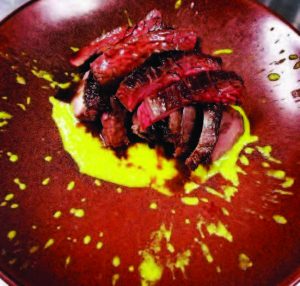 This fish menu is capped by a peach custard that’s as light and frothy as a soufflé and harbors hints of sweet vermouth; it’s finished with finely grated almond. Now that’s how you end a seafood dinner.
This fish menu is capped by a peach custard that’s as light and frothy as a soufflé and harbors hints of sweet vermouth; it’s finished with finely grated almond. Now that’s how you end a seafood dinner.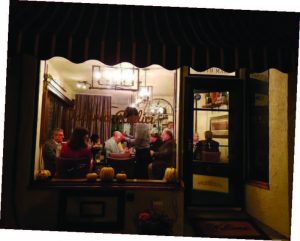 Randy and Ally, who grew up in Central Jersey, first met and became friends while students at the Peddie School in Hightstown. They went off to college (she, Wellesley; he, Boston) and, after reconnecting, began dreaming of creating their own restaurant. In the meantime, Randy amassed serious kitchen credentials, working with Scott Conant at L’Empero and Fabio Trabocchi at Fiamma, and, closer to home, The Ryland Inn and Harvest Moon Inn. They chose Allentown to both stay close to family in the Hopewell Valley and to farmers and artisans they’d grown to admire.
Randy and Ally, who grew up in Central Jersey, first met and became friends while students at the Peddie School in Hightstown. They went off to college (she, Wellesley; he, Boston) and, after reconnecting, began dreaming of creating their own restaurant. In the meantime, Randy amassed serious kitchen credentials, working with Scott Conant at L’Empero and Fabio Trabocchi at Fiamma, and, closer to home, The Ryland Inn and Harvest Moon Inn. They chose Allentown to both stay close to family in the Hopewell Valley and to farmers and artisans they’d grown to admire.




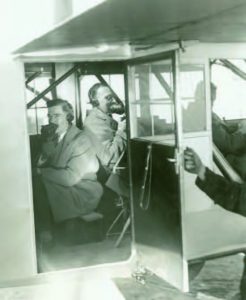

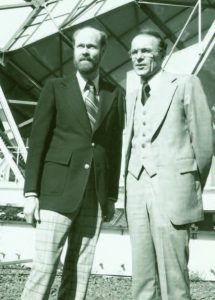
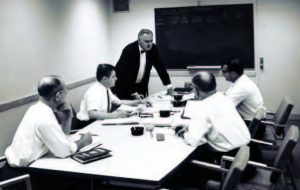
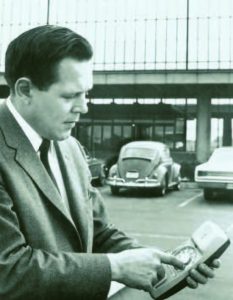







 PUTTING THE ‘S’ IN STEAM
PUTTING THE ‘S’ IN STEAM
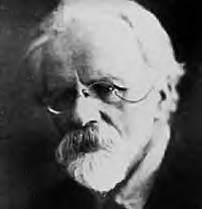

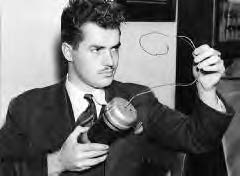
 Let ’Em Eat Bark
Let ’Em Eat Bark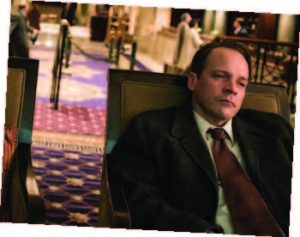 WAIT…WHAT?
WAIT…WHAT?